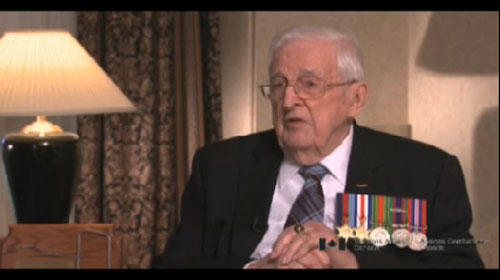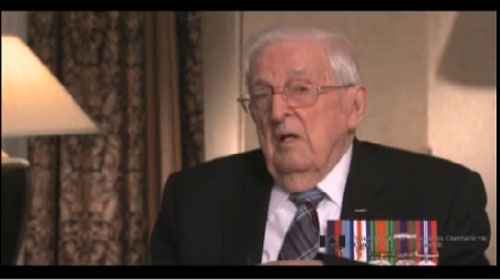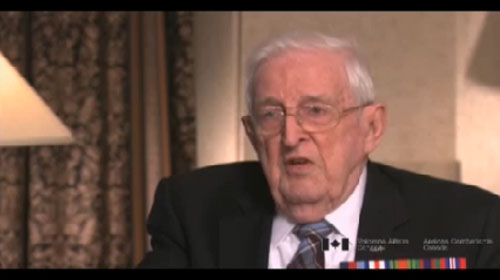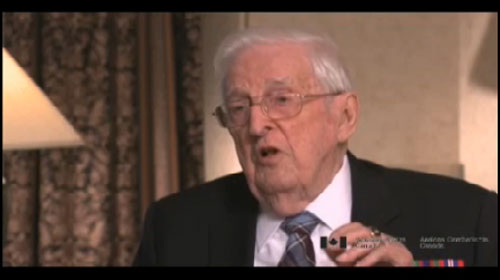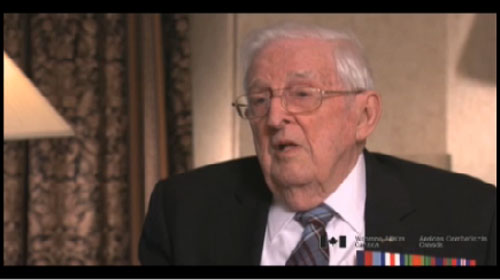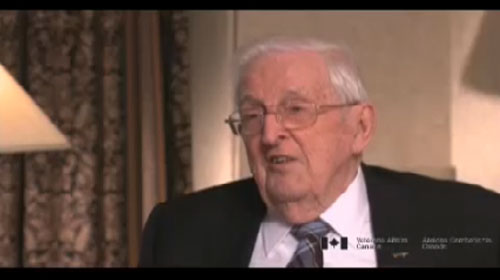WAG on the Lancaster
Heroes Remember
WAG on the Lancaster
So as you went through the preliminaries of
training, the powers that be pretty well
assigned you what section, I mean a person
might have wanted to be a fighter pilot but
there were too many fighter pilots and
they needed gunners in Bomber Command so
automatically they put you in Bomber Command.
Once you were slated for a certain category
of Bomber Command, they didn't even say
Bomber Command in those days.
It was either fighter command or other.
I was what you called a WAG,
a wireless air gunner,
which meant that I was fully trained
on handling the guns either in the
rear turret or the mid upper turret
as well as look after the wireless set
receiving or transferring.
Interviewer: And what type of aircraft did you fly in?
During the war, actually in action was
the Lancaster. The Lancaster was the
number one Bomber Command aircraft.
It was a fantastic four-engine aircraft and
could withstand terrific damage from
flak or fighters and so on.
And it had a long range, wonderful
maneuverability and as a matter of fact,
at the end of the war it was pretty well
selected as the number one bomber aircraft
on our side, on the allied side.
Related Videos
- Date modified:



